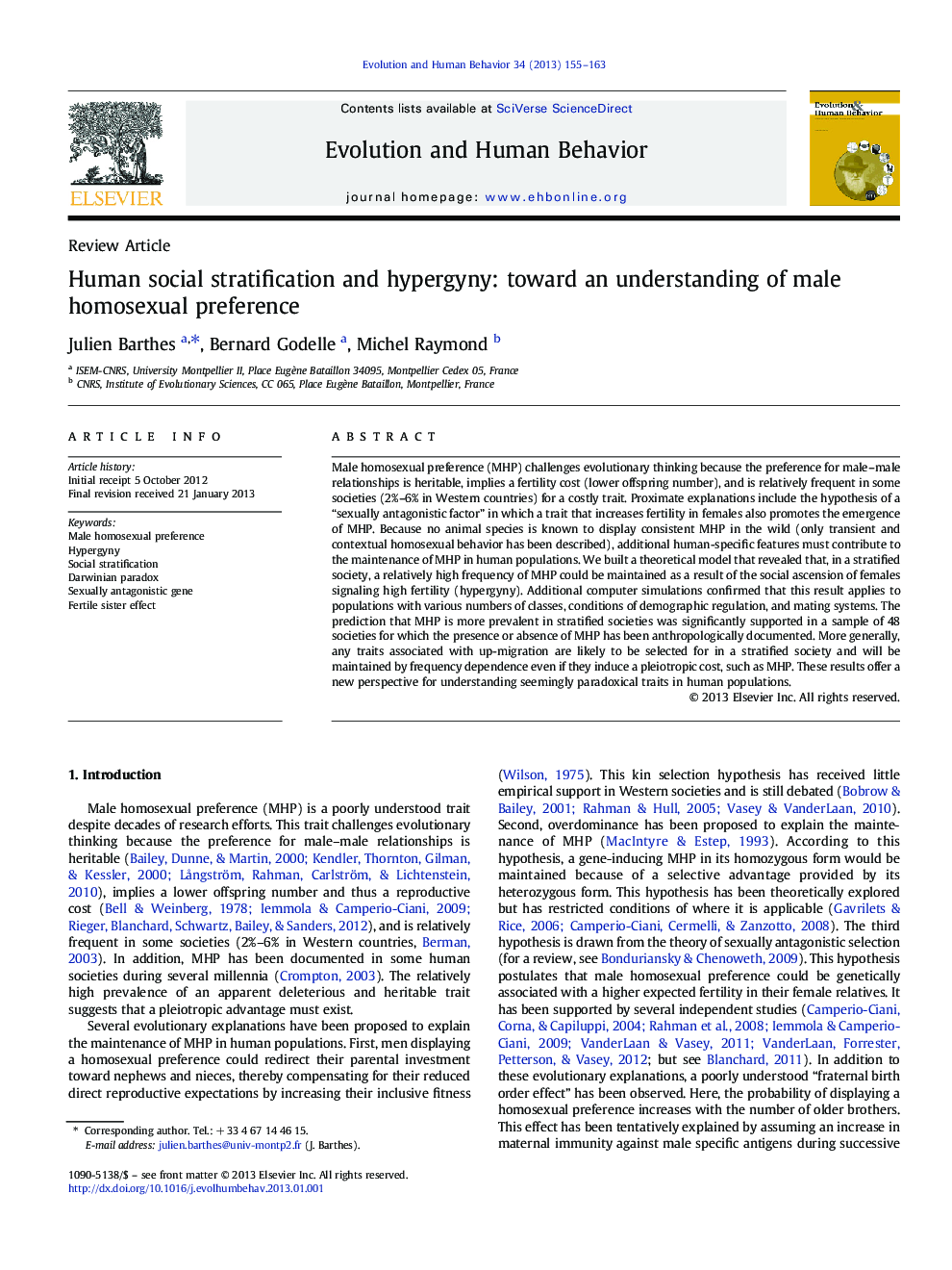| Article ID | Journal | Published Year | Pages | File Type |
|---|---|---|---|---|
| 943128 | Evolution and Human Behavior | 2013 | 9 Pages |
Male homosexual preference (MHP) challenges evolutionary thinking because the preference for male–male relationships is heritable, implies a fertility cost (lower offspring number), and is relatively frequent in some societies (2%–6% in Western countries) for a costly trait. Proximate explanations include the hypothesis of a “sexually antagonistic factor” in which a trait that increases fertility in females also promotes the emergence of MHP. Because no animal species is known to display consistent MHP in the wild (only transient and contextual homosexual behavior has been described), additional human-specific features must contribute to the maintenance of MHP in human populations. We built a theoretical model that revealed that, in a stratified society, a relatively high frequency of MHP could be maintained as a result of the social ascension of females signaling high fertility (hypergyny). Additional computer simulations confirmed that this result applies to populations with various numbers of classes, conditions of demographic regulation, and mating systems. The prediction that MHP is more prevalent in stratified societies was significantly supported in a sample of 48 societies for which the presence or absence of MHP has been anthropologically documented. More generally, any traits associated with up-migration are likely to be selected for in a stratified society and will be maintained by frequency dependence even if they induce a pleiotropic cost, such as MHP. These results offer a new perspective for understanding seemingly paradoxical traits in human populations.
